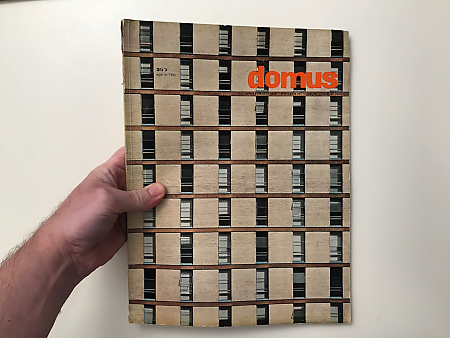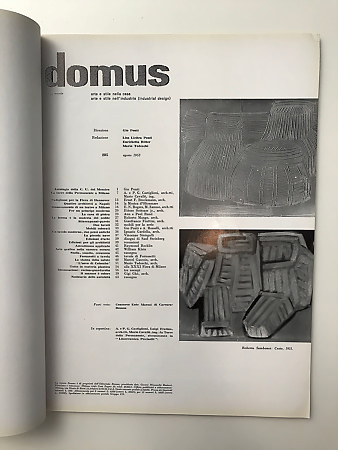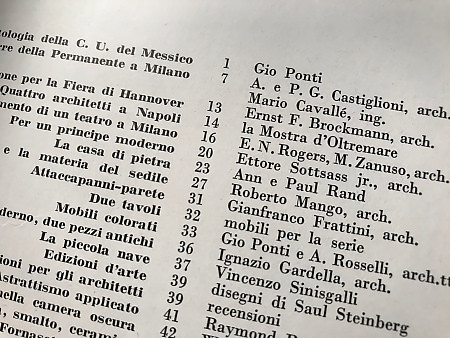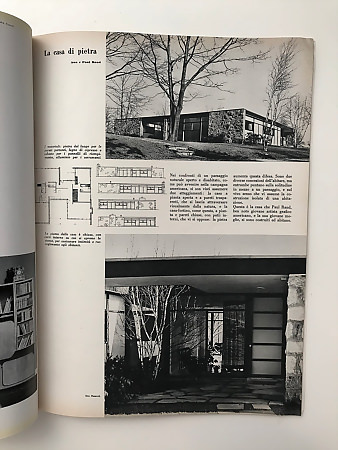The Original Text
La casa di pietra
Ann e Paul Rand
I materiali: pietra del luogo per le pareti portanti, legno di cipresso e asbesto per i pannelli di riempimento, alluminio per i serramenti.
La pianta della casa è chiusa, con corti interne su cui si aprono le stanze, per assicurare intimità e raccoglimento agli abitanti.
Nei confronti di un paesaggio naturale aperto e disabitato, come può avvenire nella campagna americana, si son visti assumere due atteggiamenti: la casa a pianta aperta e a pareti trasparenti, che si lascia attraversare visualmente dalla natura, e la casa-fortino, come questa, a pianta e pareti chiuse, con patii interni, che vi si oppone: la pietra aumenta questa difesa. Sono due diverse concezioni dell’abitare, ma entrambe puntano sulla solitudine in mezzo a un paesaggio, e sul vivo senso che vi assume la costruzione isolata di una abitazione.
Questa e la casa che Paul Rand, ben nato giovane artista grafico americano, e la sua giovane moglie, si sono costruiti ed abitano.
La casa di pietra: pietra nuda all’esterno, pietra nuda all’interno. La pietra ha significato non come motivo di decorazione, ma dove rappresenta una superficie viva e irregolare contenuta entro una architettura esatta; all’interno, è elemento su cui poggia, per contrasto, la comodità e il calore dell’abitare.
Lo studio di Paul Rand, artista grafico, e il soggiorno. Una suggestione di casa giapponese appare in questo interno: l’arredamento è spontanea e noncurante, predominante è l’inquadratura degli spazi, entro il reticolo geometrico dei serramenti.
Translated text (via Google Translate)
The stone house
Ann and Paul Rand
Materials: local stone for load-bearing walls, cypress wood and asbestos for filling panels, aluminum for windows and doors.
The plan of the house is closed, with internal courtyards on which the rooms open, to ensure intimacy and recollection to the inhabitants.
With regard to an open and uninhabited natural landscape, as can happen in the American countryside, two attitudes have been seen: the open-plan house and transparent walls, which can be visually crossed by nature, and the house-fort, like this one, a plant and walls closed, with internal patios, which opposes: the stone increases this defense. They are two different conceptions of living, but both focus on solitude in the midst of a landscape, and on the living sense that the isolated construction of a house takes on.
This is the home that Paul Rand, a well-born young American graphic artist, and his young wife, have built and inhabit.
The stone house: bare stone on the outside, bare stone on the inside. Stone has a meaning not as a decorative motif, but where it represents a living and irregular surface contained within an exact architecture; inside, it is an element on which the comfort and warmth of living rests, by contrast.
The study of Paul Rand, graphic artist, and the living room. A suggestion of a Japanese house appears in this interior: the furniture is spontaneous and nonchalant, the framing of the spaces is predominant, within the geometric lattice of the frames.










